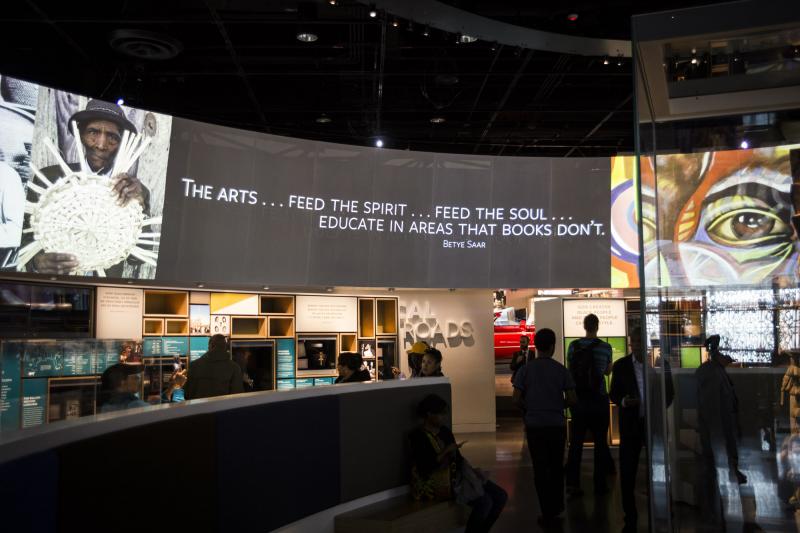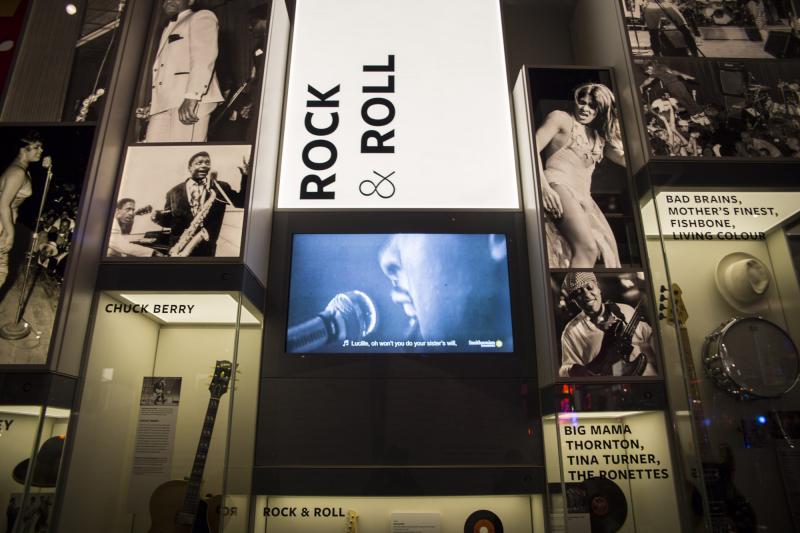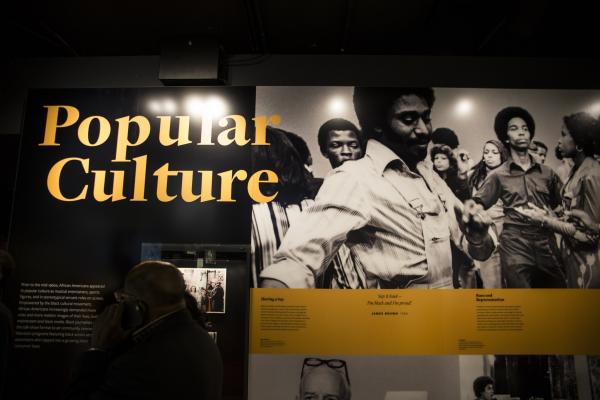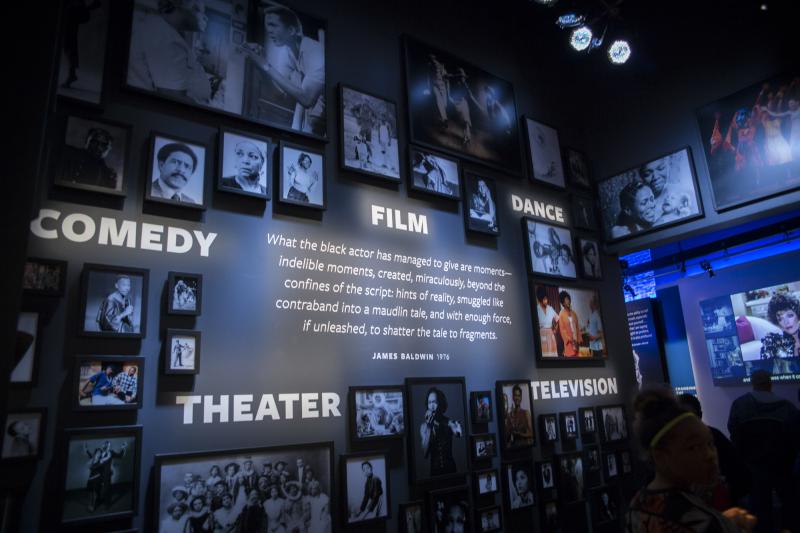There is a grief counselor on call at the National Museum of African American History and Culture — and understandably so. The museum’s collection has the potential to trigger great pain, inherited pain, ceaseless pain. Among the museum’s artifacts is a blood-stained map found on the body of an abolitionist. In the building is a slave cabin transported from South Carolina all the way to Washington, D.C. In a room filled with nothing else is a casket that held Emmett Till’s pummeled body during his funeral.
So there was a gloom and reverence with which I walked through the first three levels of the museum, and under which many of the people around me also seemed to travel. We were in the presence of ruins, from days when black bodies were treated like cattle and felled like sugarcane crops. We were staring at the adornments of Ku Klux Klan members, at shards of glass from the 16th Street Baptist Church. And we were doing so only days after yet another police shooting of yet another unarmed black man. Death was in the air, and we were the bereaved.
But the mood of the place changed drastically when I reached the museum’s fourth and final level, devoted to the art of African Americans and titled “Culture Galleries.” In a matter of seconds, a young black boy near me spotted a display devoted to Whitney Houston and ran over to check it out, yelling Whitney’s name in excitement as he did so, his friends running behind him. In front of me a black father and his teenage son posed to take a picture with Chuck Berry’s 1973 Eldorado, and as they did so I thought about how I preferred this image — as opposed to the sight of Alton Sterling bleeding to death, his son days later weeping and crying out, “I want my dad.”
It was in the “Culture Galleries” that I realized the genius of the museum’s structure. Traveling upward from the lowest level of the museum is a journey categorized by destruction and mutilation, but purposefully so. What awaits you on the highest level of the building isn’t a space filled with continued evidence of the evil which dismantled many black people. What is there is evidence of what black people put together. The things we fashioned with our imaginations and our love. The art we created to simultaneously sustain our hope and heal this nation.
aahm06.jpg

When I entered the section of the fourth level that was devoted to Broadway, the song “Brand New Day” from the soundtrack of The Wiz began to play over the room’s speakers, and as I sang the words to myself I thought about the resilience it took for African Americans to get here. The path to establishing a national museum for black Americans alone was difficult, and harder yet were the struggles of the civil rights movement, and the tears shed by the many who were enslaved. Harder yet were the lashes, the lynching, the boats that carried black people from the land they called home to a prison from which many couldn’t escape.
And still yet, despite all those trials, there came a day when congressman and civil rights leader John Lewis addressed an excited crowd and marked the opening day of the National Museum of African-American History and Culture. There came a day when the first African-American president of the United States and the first African-American first lady of the United States stood onstage with the daughter of a slave, and together rang a bell from a historic black church, signaling the opening of a new sanctuary.
For the National Museum of African American History and Culture is undeniably a place for mourning, but it is also undoubtedly a place for celebration. It’s a testament to faith, to the belief that anyone can gather up even the smallest amount of hope and watch it multiply and move mountains and even shape the very ground we walk on.
It’s a joyous birth. And there’s a lot of life ahead of us.
aahm07.jpg

Got something to say about what you're reading? We value your feedback!


